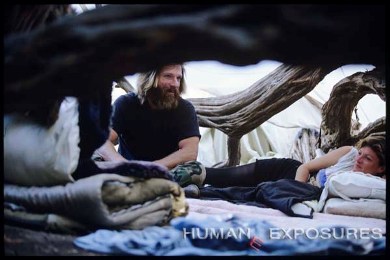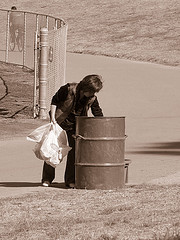 There are many stereotypes about the homeless. To many people they are written off as alcoholics and drug addicts. Others barely register their existence. Despite the recent economic misadventures, events that have greatly swelled the ranks of the homeless, these stereotypes remain consistent.
There are many stereotypes about the homeless. To many people they are written off as alcoholics and drug addicts. Others barely register their existence. Despite the recent economic misadventures, events that have greatly swelled the ranks of the homeless, these stereotypes remain consistent.
Only someone oblivious to reality would say there is no substance abuse among the homeless. By the same token you cannot paint such a diverse group of people with a single brush.
Between the housing crash and the ailing national economy many thousands have become homeless over the past few years. Families that had opted for sub-prime mortgages suddenly found themselves on the streets. Families and parents pushed to the financial brink find themselves on the street. Across the United States people who have been living paycheck to paycheck are finding themselves sleeping under the stars.
A highly disturbing number of these these recent homeless are women, children and veterans. And still the pejorative stereotypes persist.
Cary Fuller, a homeless single mother, gave her thoughts on the subject in a recent post for the Huffington Post:
The first thing I asked him was this: “If the homeless had permanent housing and support services, would they be hanging around in parks and alleyways?” Give people something better to do and a better place to go and the majority will, I said. At this point he then said that many of these homeless could get welfare and a job to which I then said “Really? Where? How can you get a job without an address? If you’re mentally ill, who will hire you?” Once again, a blank stare from my ex-neighbor. That’s when I told him that if you’re not part of the solution, you’re part of the problem and the problem here is that too many people have the attitude that they don’t have to get involved with anything so long as they’re not affected. The truth is that everybody is affected by homelessness. When homeless people get sick to the point of having to be taken to the emergency room, who do you think foots the bill for that?
Her last observation was particularly resonant. While people may well tune out the homeless they see on the streets, their pocketbooks cannot. (This is the reason we titled our documentary It’s More Expensive to do Nothing. The cost of rehabilitating these people back into mainstream society is far less than is currently being expended.)
To the vast majority of people the homeless remain faceless. As a result they fall back on images of the rum-soaked alcoholic snoring away the afternoon under an overpass – and other caricatures.
Take a moment and meet some of them. In our book downTown:USA our own Susan Madden Lankford takes you on a visual journey into their world, where she shares their narratives.
You see these people on your streets every day. Now take a moment and really look at them.




 Here at HUMAN
Here at HUMAN We live in an amazing age, the age of information, which has a direct and palpable impact upon the issues we try to address. One great example is homelessness, a major focus of the works we produce. Not only is social media an excellent tool for educating the populace about the problem, but it can also give a voice to those who are experiencing it.
We live in an amazing age, the age of information, which has a direct and palpable impact upon the issues we try to address. One great example is homelessness, a major focus of the works we produce. Not only is social media an excellent tool for educating the populace about the problem, but it can also give a voice to those who are experiencing it. Photography is a powerful tool for getting across the humanity behind the major issues of the day. Of course, at HUMAN
Photography is a powerful tool for getting across the humanity behind the major issues of the day. Of course, at HUMAN







